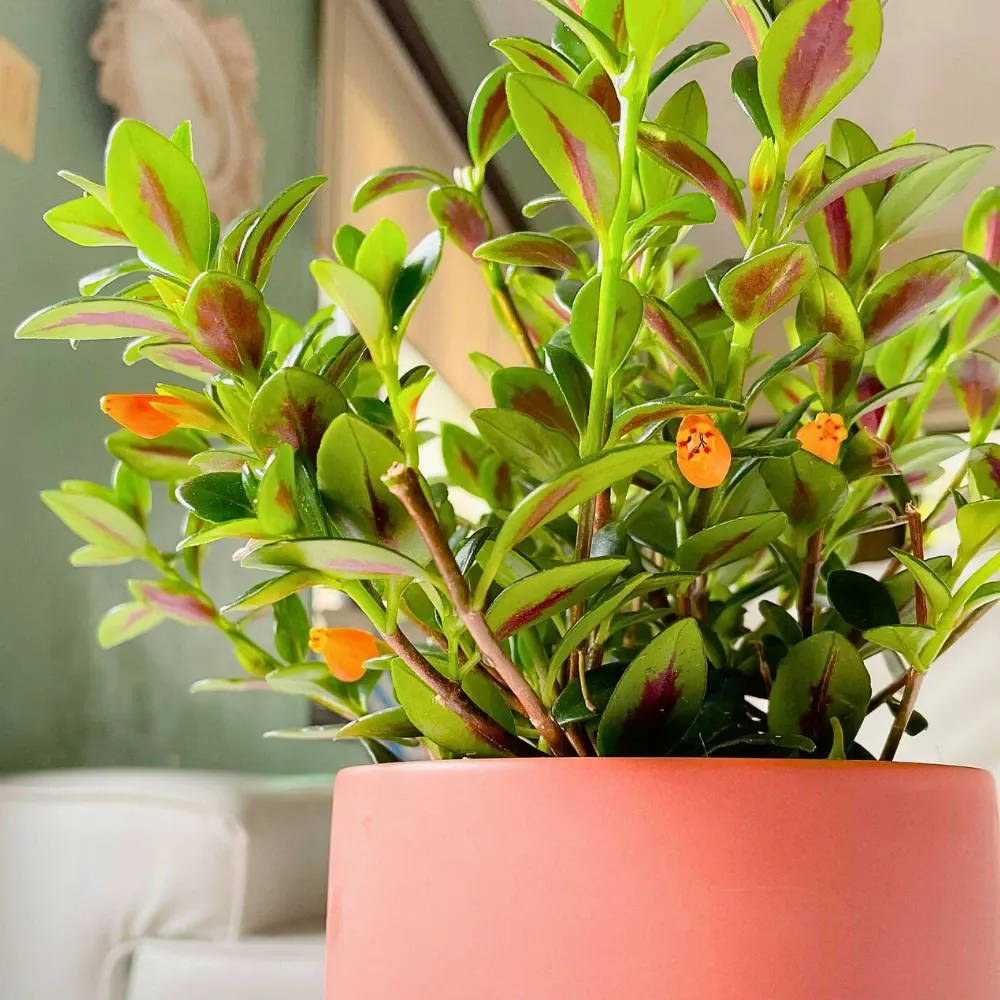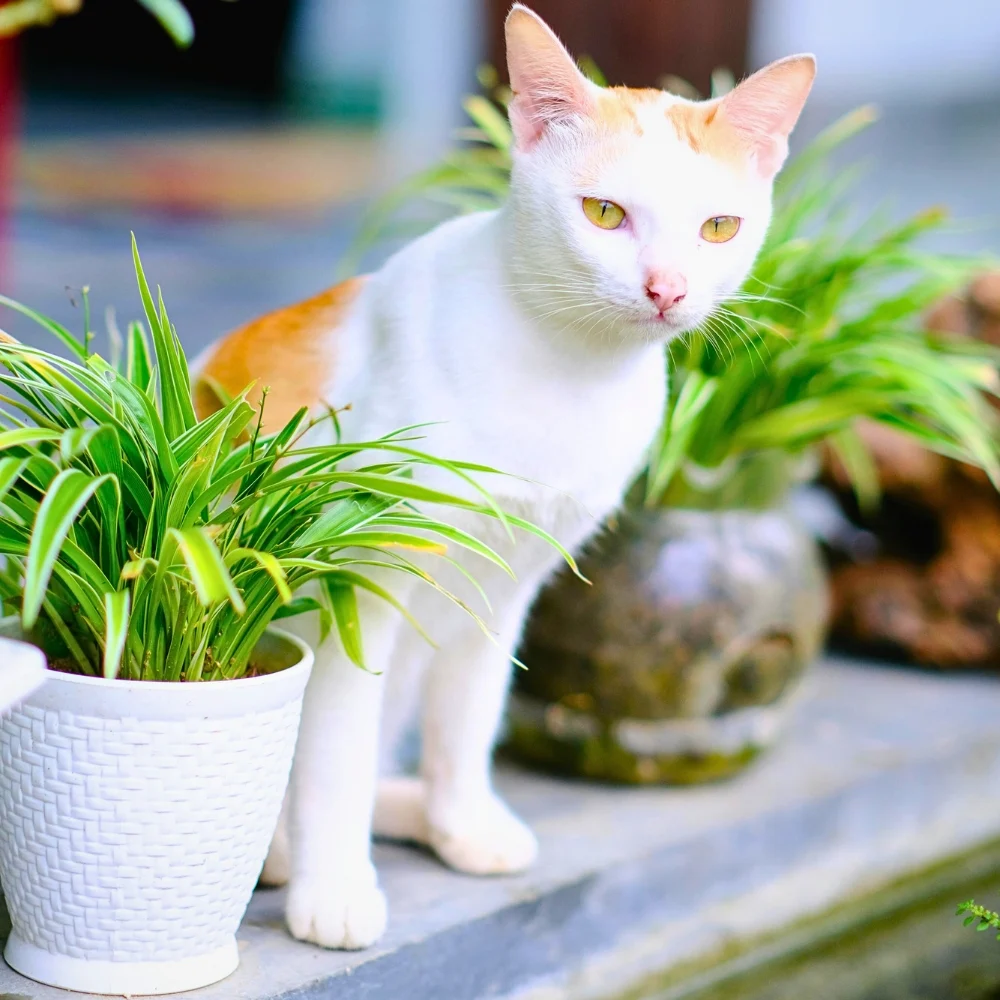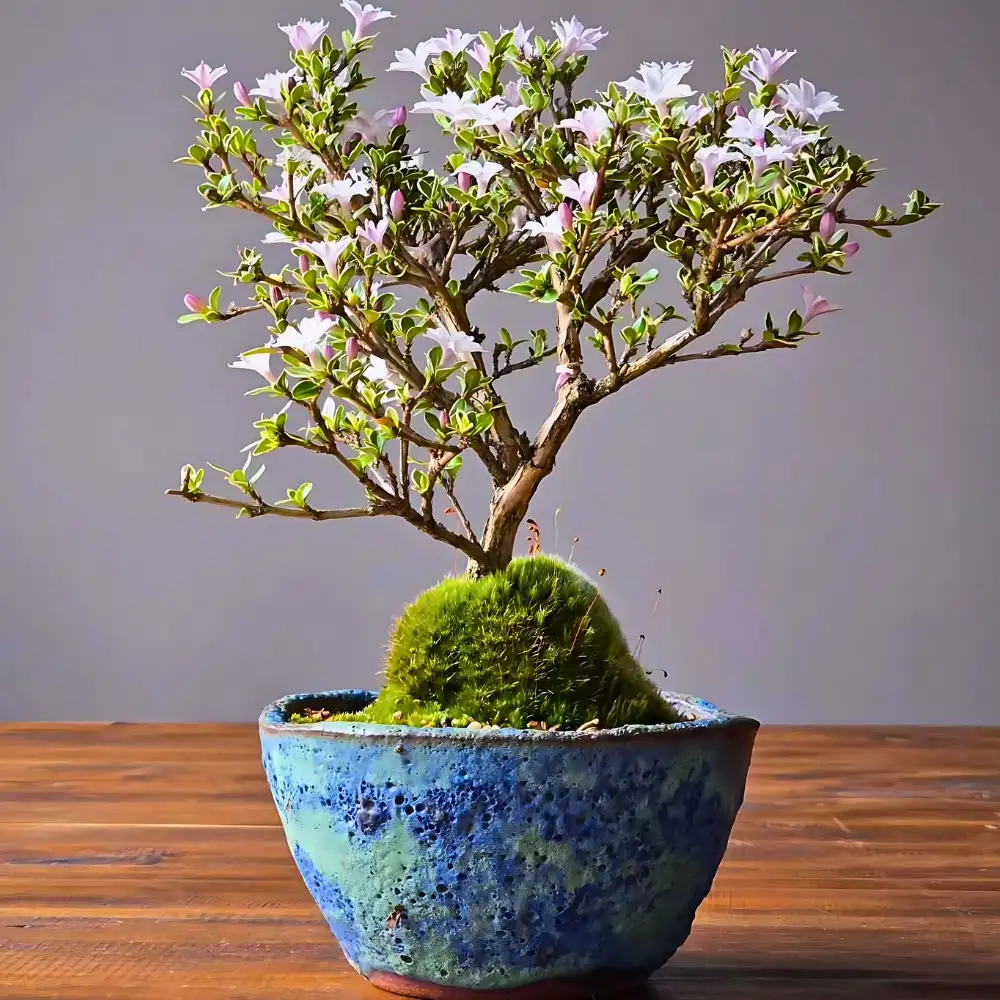The Chinese Money Plant is an eye-catching green beauty that has become one of the world's most popular plants. Best of all, it is quite easy to care for. Here is everything you need to know about the Chinese Money Plant and how to care for it to obtain the greenest and healthiest results.
Chinese Money Plant (Pilea Peperomioides): What You Must Know
Do you want to bring money and prosperity into your life — or at least, into your home? Then it's easy. All you have to do is find a good local flower shop or garden center and add a Chinese Money Plant (botanical: Pilea peperomioides) to your indoor plant collection, and it'll bring you tons of good luck and fortune.
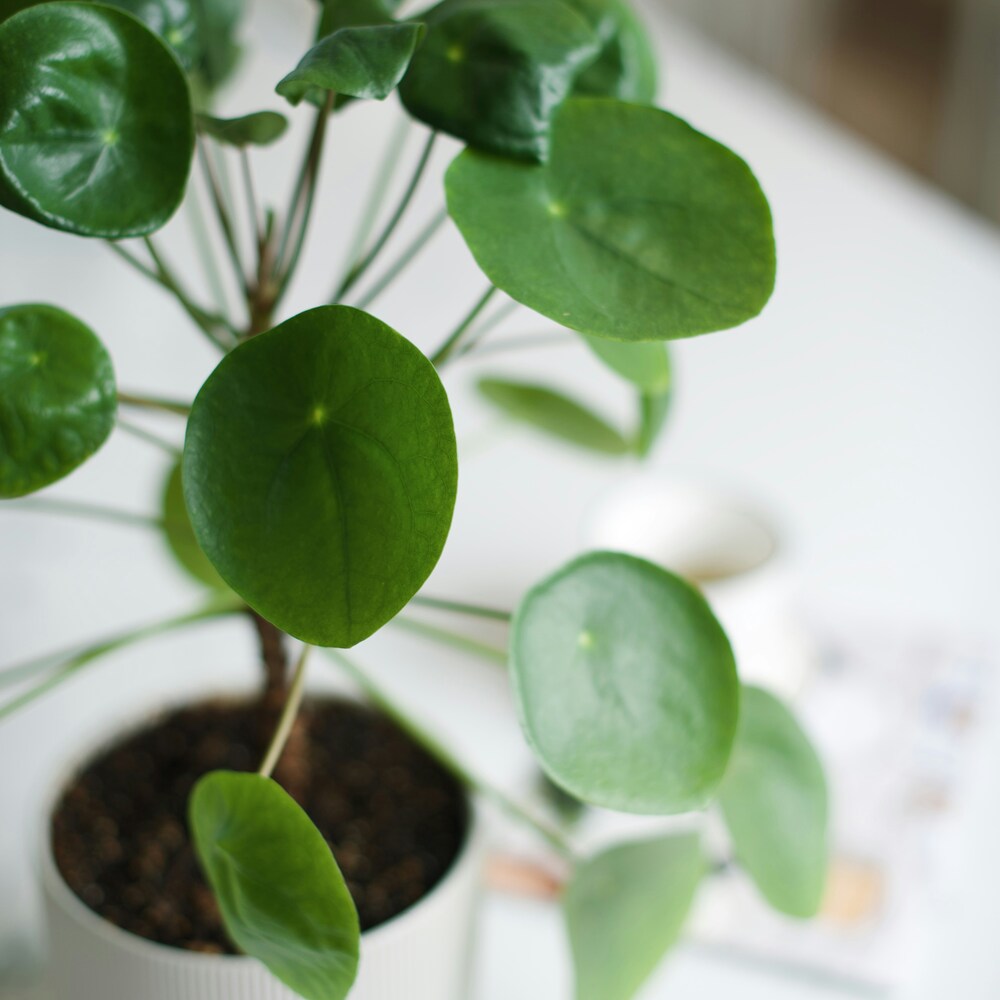
This Chinese Money Plant is very trendy and is widely available, so it won't give you any trouble finding one close to you. It is a plant appropriately named for its coin-shaped leaves and is also one of the finest bets for beginners looking for a low-fuss, low-maintenance plant. From its name and origin to care handles, you'll learn everything you need to keep your Chinese Money Plant healthy and blooming indoors. See also 'Houseplants With the Most Unique Leaves'.
Why Is it Called the Chinese Money Plant?
The plant's name, Chinese Money Plant, comes from a combination of its origin and symbolic associations. Let's take a closer look at such relevant, correlational facts!

First, the obvious reason is that the plant has its natural habitat in China, specifically in the Yunnan and Sichuan provinces near the Himalayas, hence the addition of the term 'Chinese'.
There is also a popular Chinese legend associated with this plant. According to the story, a poor farmer made routine prayers to the gods asking for wealth. He later found Pilea peperomioides growing in his field. He propagated the plants and sold them, eventually growing wealthy. This story supports the reputation that the plant brings fortune, good luck, wealth, and prosperity.
You can add another plant as well every Chinese New Year. Here, you can read the article on Lucky Plants & Flowers to Buy for Chinese New Year.
Besides being called the Chinese Money Plant, this plant is also nicknamed Pancake Plant, UFO Plant, and Friendship Plant.
Origin of the Chinese Money Plant
The Chinese Money Plant has rounded, flat, coin-shaped leaves; hence, its common name. Its delicate stems will dance as a breeze blows through a filtered light window. Where the stem attaches to the underside of the leaf, a yellowish dot appears on the top side of the leaf, making it more unique to enjoy.

This popular green plant has acquired a slew of different names over the years. This goes to demonstrate how well-known and popular this amazing plant is. If someone has a plant checklist, you'll find this green beauty on it, and it has become a part of everyone's wish list.
This magnificent houseplant is also known as a UFO plant, pancake plant, lefse plant, missionary plant, bender plant, and mirror grass plant.
Origin of the Chinese Money Plant
This flowering perennial in the nettle family (Urticaceae) is native to southern China, growing naturally along the base of the Himalayan mountains. Western scientists discovered the Chinese Money Plant in 1906, but not much transpired scientifically after that. Part of this could be because it is naturally found in typical inhospitable regions in China.
The plant did make its way into the collections of many houseplant lovers, but no one knew what to call it until the 1980s. This is when a botanist at Kew (England's royal botanic garden) eventually connected it to a lovely round-leaved Chinese plant reported in 1912 and soon forgotten by scientists. Those cuttings took off, for the plant was common in homes throughout Scandinavia and beyond when Kew and other botanic gardens began investigating it.
Even after scientists became aware of the enthusiastic trade in Chinese Money Plant cuttings among houseplant aficionados, it took an eternity for commercial nurseries to recognize their potential. But nowadays, it steals the hearts of many plant lovers and is widely seen worldwide.
Popular Chinese Money Plant Varieties
-
Pilea peperomioides Mojito: A variegated Pilea with lighter green leaves than the normal Chinese Money Plant. The leaves are speckled with small splashes of darker green.

-
Pilea peperomioides Sugar: Also variegated, with tiny white speckles on a normal base color, almost like someone sprinkled sugar on the leaves of a Chinese money plant.
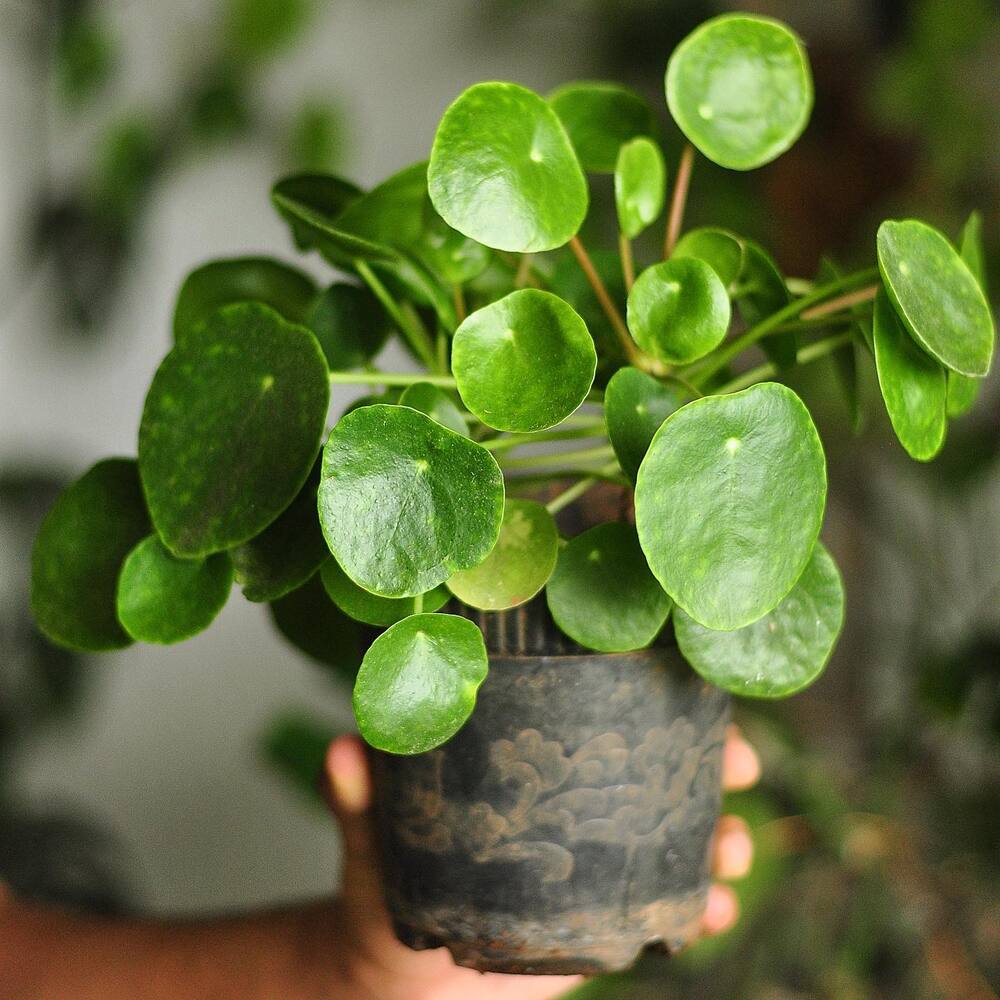
-
Pilea peperomioides White Splash: Normal base color with larger, silvery-white splashes of variegation on leaves of Chinese money plant.

Caring for Chinese Money Plants
Chinese Money Plants require care that ensures they receive bright, indirect light, consistent watering without waterlogging, and regular dusting of their round, green leaves to maintain their health and elegant appearance.
Light Conditions that Suit Chinese Money Plants
The Chinese Money Plant does not require much light because it grows naturally in shady woodland areas—it does not require direct sunlight! Place yours on a ledge or near a window that gets enough indirect light, and you're good to go.
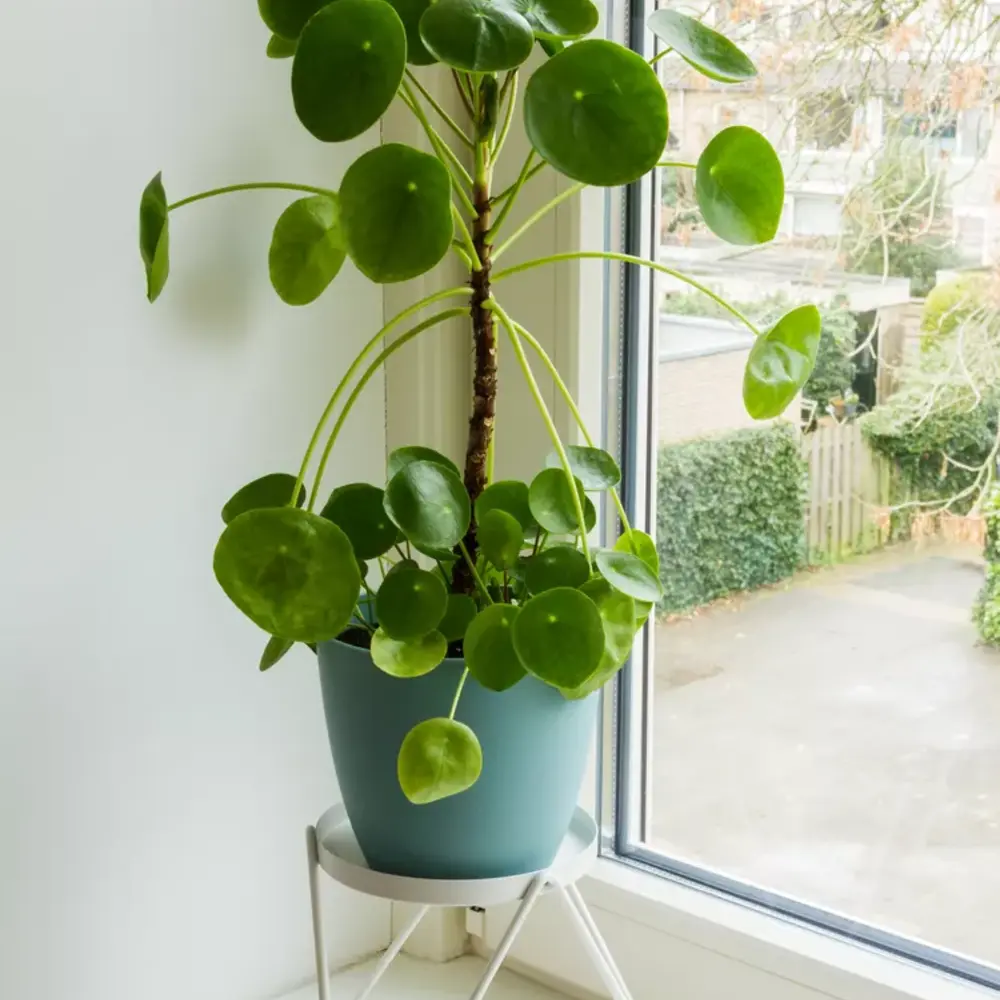
If you must keep your plant in direct sunlight, adapt it gradually to prevent its leaves from burning. Keep it out of direct sunlight to avoid poor growth, leaf drop, and other problems. Artificial illumination is an alternative for people whose windowsills are already overrun with houseplants.
Chinese Money Plant Care: Temperature
Because the Himalayan foothills aren't always ideally warm, this is a fantastic species for those slightly cooler locations in the house that finicky tropicals like Alocasias wouldn't endure. It's theoretically adapted to endure temperatures down to freezing; however, it does stop growing when things become too cold. It's best to keep temperatures above 10 degrees Celsius for the best results.
Chinese Money Plant Care: Water
One advantage of the Chinese Money Plant is that it does not require a lot of water. It prefers lightly moist soil, especially in the summer, but it won't die if you forget about it for a few days. It is preferable to submerge rather than overwater, as the latter might cause root rot.
The Bottom line is, that it all depends on elements like light, temperature, and soil. Sticking your finger in the soil and feeling the moisture level is the best way to tell if it's time to water. If it still feels damp, wait a bit longer.
Fertilizing Your Pancake Plant
The Chinese Money Plant grows quickly, so it will welcome additional help now and then. This is especially true if you haven't repotted in a while, as the soil nutrients would have diminished by now. It doesn't require much: sprinkle ordinary liquid houseplant fertilizer during watering every other week or so.

Be sure to fertilize only during the growing season and check if your pilea is flourishing well. If it's suffering or not growing (as it is throughout the winter), fertilizer might injure the roots and worsen matters.
Pruning Your Chinese Money Plant
Aside from occasionally removing dead leaves, your Chinese Money Plant will not require pruning. The plants shed their lower leaves as they grow because the higher ones absorb more sunlight and are thus more useful for photosynthesis. Unless the leaves are falling at an alarming rate, a little brown foliage is nothing to be concerned about.
Tips to Propagate a Chinese Money Plant
A healthy Pilea peperomioides, sometimes known as the 'sharing plant', is particularly easy to spread since it readily develops offshoots. These offshoots rise from the root system but can also sprout from the nodes along the stem of the mother plant, commonly in locations where old leaves have fallen off.

Read also 'The 7 Easiest Houseplants to Propagate'.
If the offshoots are a couple of inches tall, you can detach them from the mother plant. You can keep these offshoots on the mother plant if you prefer a larger, bushier look. Here's how to spread via offshoots:
-
To separate an offshoot from the roots of the mother plant, gently dig around in the soil using a clean knife or pruning shears to expose the roots of the offshoot.
-
Cut the main root an inch or two below the soil.
-
Immediately move the cutting into some moist soil in a separate container.
-
Keep the soil moist (but not waterlogged) until the new plant has established a root system in the new pot, and then resume a regular watering and fertilization schedule.

If you want a dose of good luck plus a beautiful, easy-to-care-for houseplant, the Chinese Money Plant is everything you need and more.
Common Problems and Pest Concerns With Chinese Money Plants
Chinese money plants, also known as pancake plants, can occasionally encounter issues. Common problems include pests like spider mites and fungus gnats, often due to high humidity or overwatering. Identifying and addressing discolored leaves, pests, and diseases is crucial for maintaining a healthy Chinese money plant.
Identifying and Addressing Common Issues: Discolored Leaves, Pests, and Diseases
Despite being a resilient plant, the Chinese Money Plant can sometimes face issues such as discolored leaves, pests, and diseases. Keep an eye out for common pests such as spider mites and fungus gnats, especially in conditions of high humidity and overwatering. These pests can damage the plant by sucking its sap, leading to weak growth and discolored leaves.

Treat your pancake plant with neem oil or mosquito bits to manage these infestations. Regularly wipe the leaves with a damp cloth to remove any visible pests and prevent further spread. Ensuring your plant receives bright indirect sunlight and avoiding soggy soil will also help keep pests at bay.
Solutions for Curing and Preventing Problems of Your Chinese Money Plant
Adjust your plant's watering and lighting conditions to address discolored leaves. Yellow leaves often indicate overwatering or too much direct sunlight. Ensure your Pilea plant receives bright indirect light and is potted in a well-draining soil mix to prevent root rot. Using a pot with a drainage hole will help avoid waterlogged soil, a common cause of root rot.
Consider adding extra perlite to your potting soil mix for an extra boost to improve drainage. Regularly check the pot size to ensure the roots have enough space to grow. If your plant is showing signs of stress, such as yellow leaves or brown spots, adjusting the light levels and watering schedule can often resolve these issues.
Advanced Care Tips for Chinese Money Plant
Consider advanced care tips to achieve a healthy Chinese Money Plant. Regular pruning encourages new growth and maintains the plant's shape, while repotting with fresh soil and using a pot with a drainage hole ensures the roots have enough space and prevents waterlogged soil.
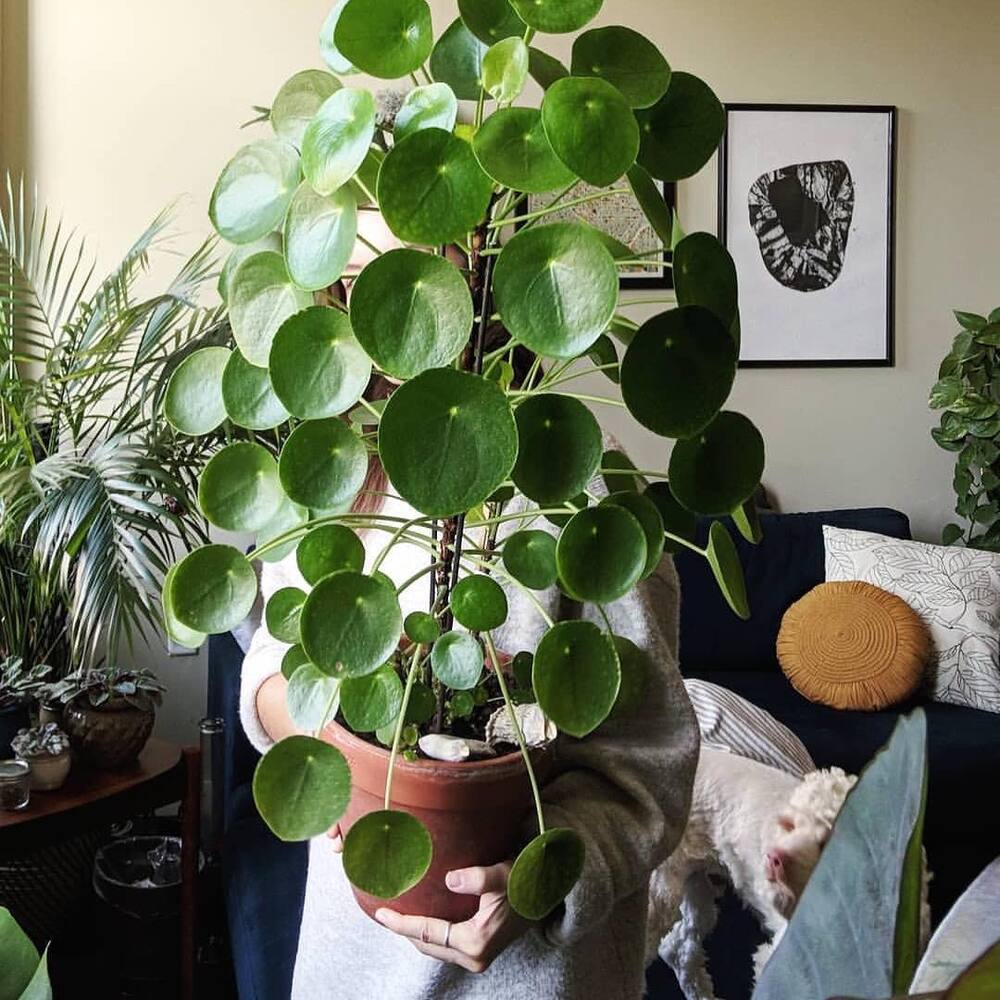
Grooming Your Chinese Money Plant
Grooming your Chinese money plant is essential when the plant is new and growing. Prune your plant to maintain its shape and encourage new growth. Removing dead or damaged leaves prevents the spread of disease and keeps the plant looking its best. Pruning in the early spring or during the spring and summer months promotes healthy growth and the development of new leaves.
Use a sharp knife or pruning shears to cut back any leggy stems or remove yellow leaves. This enhances the plant's appearance and encourages it to produce more tiny flowers and small offsets, leading to a bushier and more energetic plant.

Repotting and Potting Your Chinese Money Plant Correctly
Repotting your Chinese Money Plant is crucial for its continued health and growth. When you notice the roots growing out of the pot or the plant becoming root-bound, it's time to move it to a slightly larger pot with fresh soil. This is typically done every few weeks to a few months, depending on the plant's growth rate.

Use a pot with a drainage hole to prevent soggy soil, and opt for terracotta pots or decorative pots that match your home's decor. A well-draining soil mix is essential, and incorporating extra perlite can help improve drainage. During repotting, gently remove the plant from its current pot, shake off excess soil, and place it in the new pot with fresh soil.
Ensure the new pot allows for proper root expansion and provides enough space for new roots to develop. This promotes healthy growth and ensures your plant continues to thrive. During winter, reduce watering to prevent root rot and allow the plant to rest.
By following these advanced care tips, you can ensure your Chinese Money Plant remains a popular houseplant in your collection, thriving and adding a touch of greenery to your home.
Chinese Money Plants - The Perfect Companion for Your Home
Chinese money plants are visually stunning and symbolize friendship and prosperity. These resilient and easy-to-care-for plants thrive with minimal effort.
Whether you're propagating Chinese money plants through stem cuttings or nurturing baby plants in a terracotta pot near a west-facing window, ensure they receive bright indirect light and filtered water.

With the right potting mix and indirect light, your coin plant will remain healthy and a great addition to any decorative pot, flourishing through the summer months and beyond.


